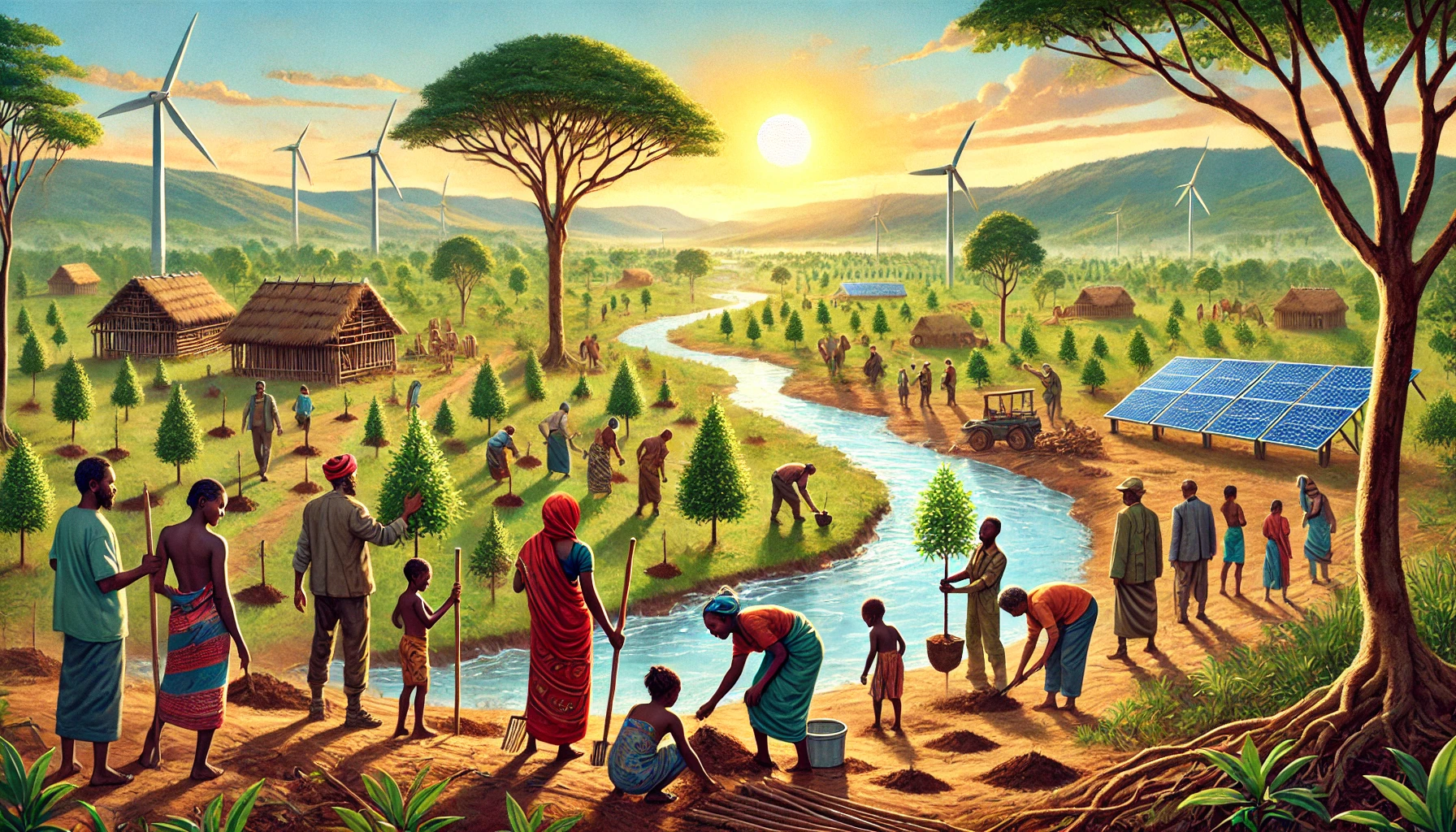Building Peace through Environmental Stewardship: A Strategy for Conflict-Affected Areas
The World Bank's study highlights the crucial role of natural resource management in preventing and mitigating conflict in fragile regions, emphasizing the need for conflict-sensitive, environmentally sustainable practices to build peace and resilience. It also stresses the importance of addressing gender inequalities and involving communities in post-conflict recovery efforts.

A study by the World Bank delves into the complex interplay between environmental degradation, natural resource management, and conflict, particularly in fragile and conflict-affected situations (FCS). Over the past decade, the incidence of violent civil conflicts has surged, leading to a near doubling of the number of people living near conflict zones and a record high in forced displacement. This escalating crisis highlights the urgent need to address the multifaceted nature of conflict, which is often driven by a combination of social, economic, and political factors, rather than a single cause. The World Bank’s 2020–2025 Strategy for Fragility, Conflict, and Violence (FCV) reflects this understanding, adopting a more holistic approach that places significant emphasis on the role of environmental factors in both exacerbating and mitigating conflict.
The Role of Natural Resource Management in Preventing Conflict
The report underscores that natural resource management can be a critical entry point for efforts to prevent conflict, build peace, and strengthen resilience in conflict-affected areas. While environmental degradation is not typically the direct cause of conflict, it can significantly exacerbate existing tensions and stressors, potentially leading to violence. The report identifies several key risk factors that increase the likelihood of conflict, including high dependence on natural resources, inequality, marginalization, and a history of conflict all of which are further aggravated by climate change. For instance, violent conflict has been shown to drive natural habitat loss and contribute to a decline in biodiversity, as evidenced by the impact on large-mammal populations in Africa between 1946 and 2010. Moreover, environmental crime, driven by military priorities, weak governance, and urgent financial needs, has emerged as the largest financial driver of conflict. The uncertain security situation in many conflict zones often forces nations into unfavorable resource contracts, and the destruction of land records during conflicts, as seen in Yugoslavia, Timor-Leste, Cambodia, and Afghanistan, further complicates efforts to manage resources sustainably.
Post-Conflict Opportunities and Challenges in Resource Management
In the aftermath of conflict, there is often a unique opportunity to rebuild and transform systems that may have been politically challenging to address during peacetime. This is particularly important when natural resources have played a role in triggering conflict or threaten the prospects for peace. However, these resources are also vulnerable to exploitation during the post-conflict period, underscoring the need for effective management to ensure they contribute to long-term stability rather than reigniting tensions.
The Gendered Implications of Conflict and Environmental Vulnerability
The report also highlights the gendered implications of conflict, noting that women, girls, and other marginalized groups are disproportionately affected by both conflict and environmental vulnerabilities. Structural gender inequalities, discriminatory laws, and adverse gender norms put these groups at a disadvantage, limiting their ability to cope with conflict and climate-related shocks. This nexus between gender, conflict, and environment increases the risk of gender-based violence, making it a critical factor to consider in any peacebuilding effort.
Natural Resources as a Pillar in the World Bank's FCV Strategy
The World Bank's FCV Strategy is structured around four pillars: prevention, engagement during conflict, transition out of fragility, and mitigation of FCV spillovers. Natural resources play a vital role across these pillars. In prevention efforts, natural resources can serve as a valuable entry point for dialogue and confidence-building among divided groups, contributing to peace dividends. During active conflict, effective natural resource management can support the stability of the economy and enable sustainable livelihoods, while also encouraging stakeholders to consider long-term issues that transcend political boundaries. In the transition out of fragility, natural resources can be central to efforts to diversify the economy, create jobs, and revitalize rural livelihoods. Initiatives such as reforestation, renewable energy programs, and sustainable agriculture can provide critical support for food security and basic services. The report emphasizes that the effects of FCV extend beyond countries in active conflict, affecting surrounding regions and contributing to issues such as migration and resource scarcity.
Integrating Conflict Sensitivity into Environmental Projects
To support the integration of conflict sensitivity into environmental and natural resource management projects, the report provides practical guidance for World Bank teams and external stakeholders. It stresses the importance of adaptive management and flexibility in project implementation, as the dynamics of fragility and conflict are constantly shifting. Community-driven development is highlighted as a particularly effective approach in conflict-affected contexts, with communities playing a key role in identifying and addressing risks. The report also advocates for affirmative action to promote gender equality, recognizing that enhancing women's participation in natural resource management is essential for achieving sustainable peace. Finally, the report includes a comprehensive questionnaire designed to help project teams assess the interplay between conflict, climate, and environment in both upstream analytics and downstream operations. This tool is intended to guide the integration of these complex dimensions into World Bank projects, ultimately contributing to the prevention of conflict and the promotion of peace through sustainable environmental practices.
- FIRST PUBLISHED IN:
- Devdiscourse
ALSO READ
Ukraine's Push for Long-Range Missile Use Amid Ongoing Conflict
Escalating Clashes in West Bank Amid Israel-Hamas Conflict
Israel-Palestine Conflict Escalates with West Bank Raids
Israeli Strikes in West Bank Escalate Amid Gaza Conflict
Russia Pressures IAEA for Clearer Stance on Nuclear Safety Amid Ongoing Conflict










